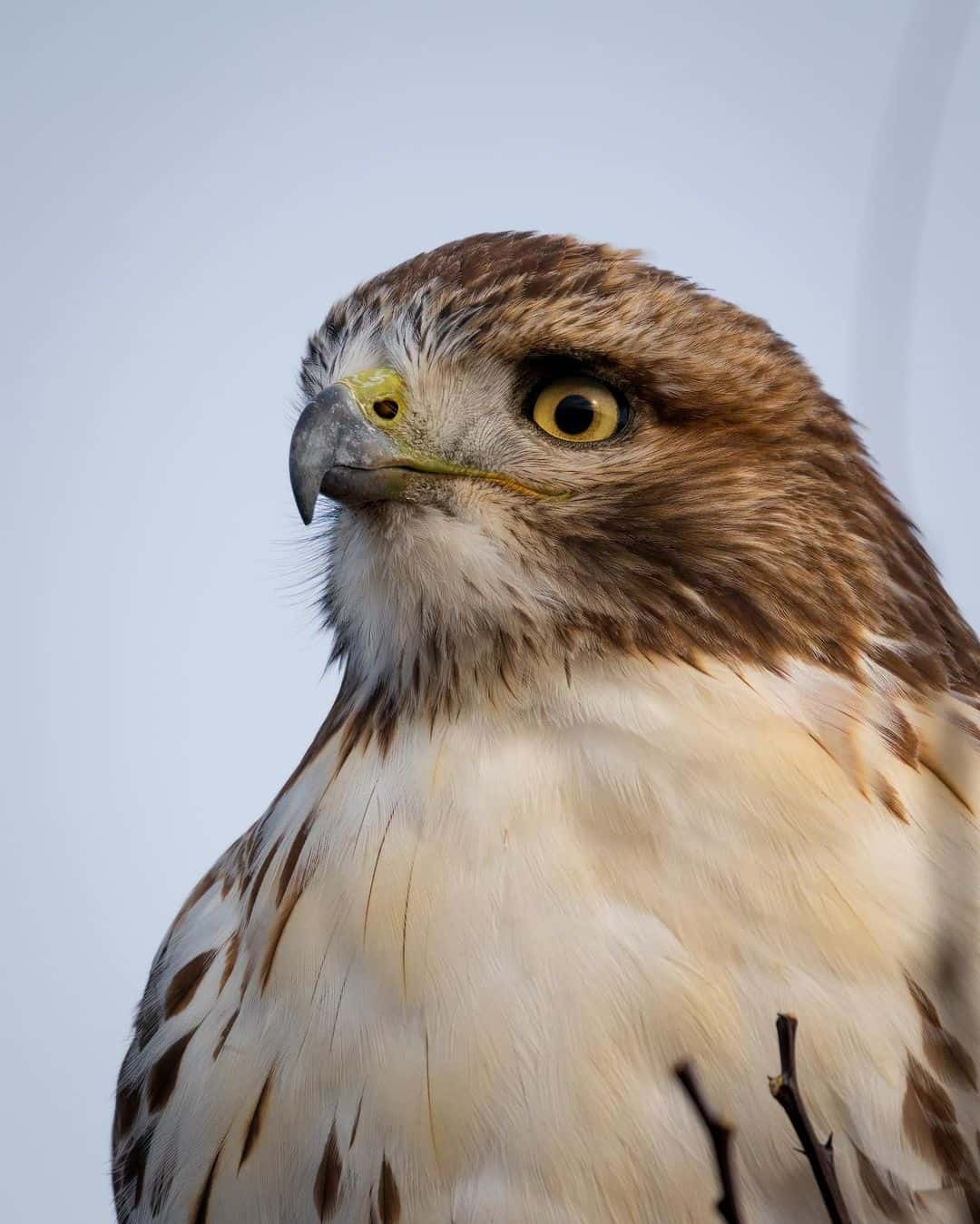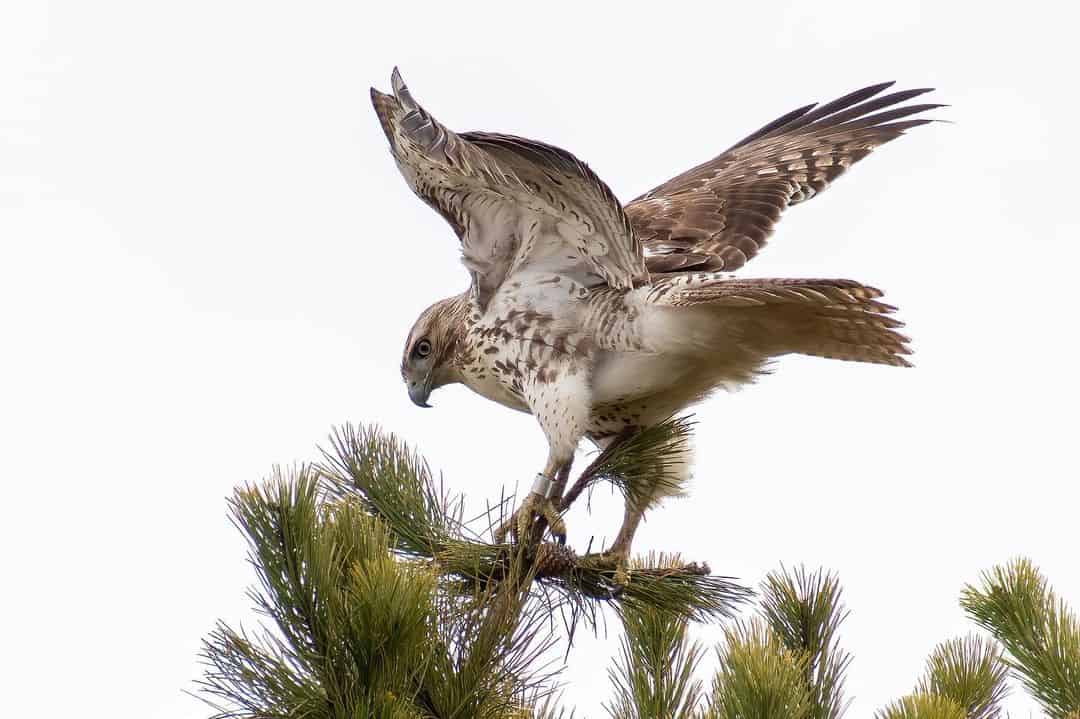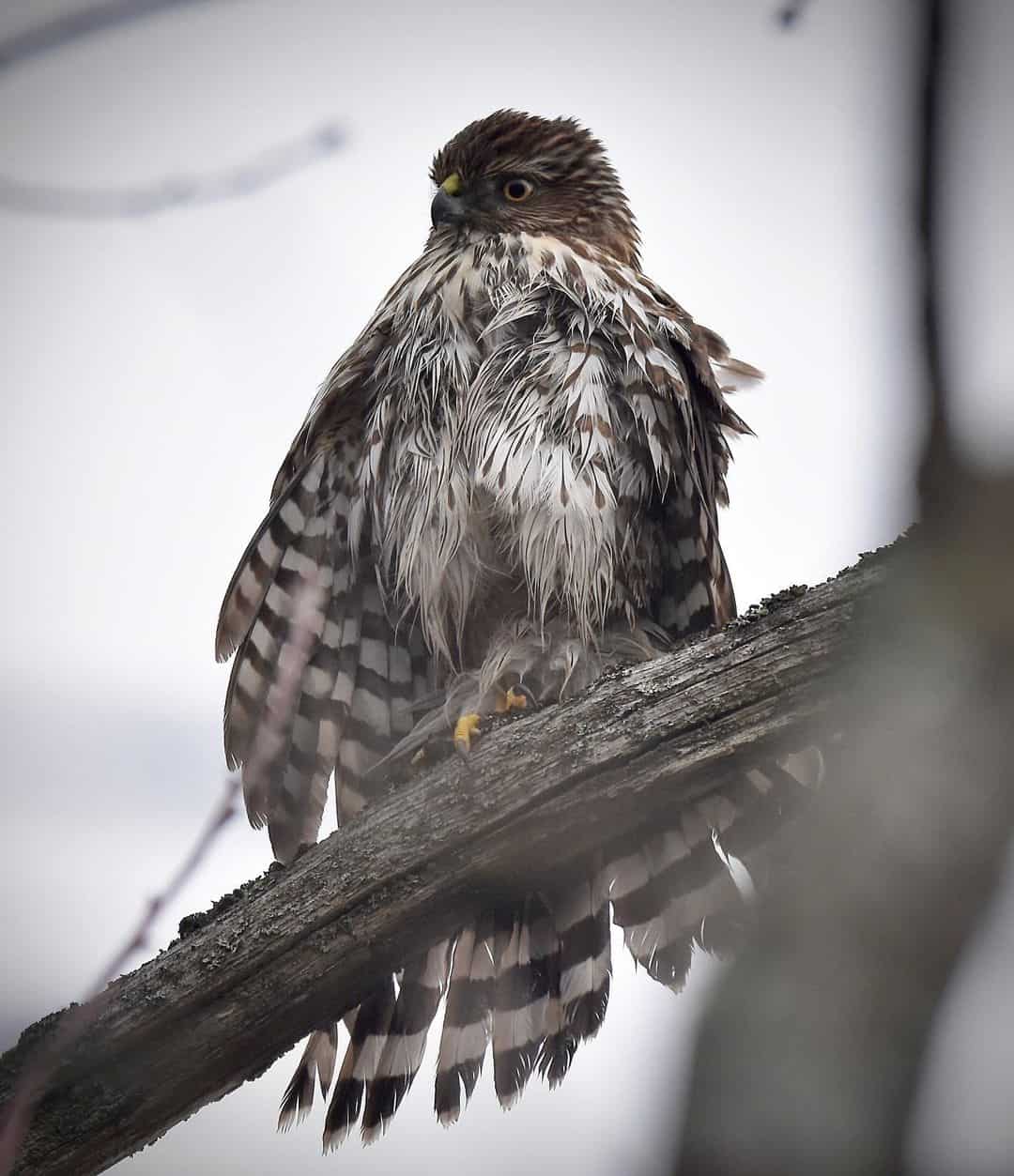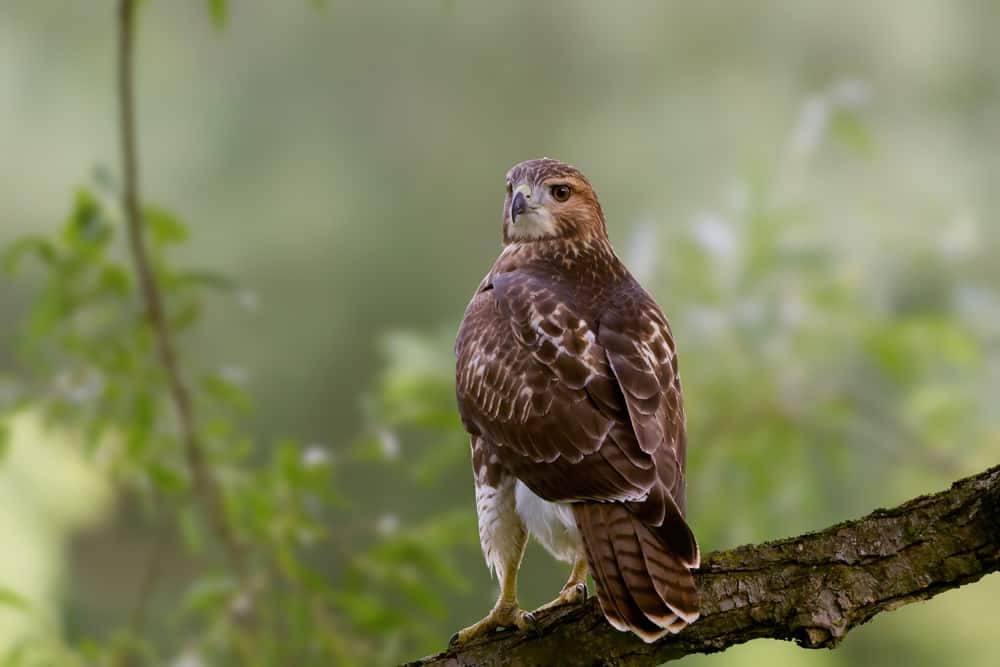Are you curious about hawks – and what eats them?
Although they are formidable predators, they’re not immune from being prey. In fact, many animals enjoy having them for dinner (or lunch.)
So what eats hawks? We’ll explore them – and more – below.
What Animals Prey on Hawks?
A hawk is a small to medium-sized bird from the Accipitridae family. Most nest in trees, but some species nest in cliffs. The Marsh hawk, for one, opts to nest in grassy areas.
Examples of hawks include the following:
- Sharp-shinned hawk. Found in the Americas, this gray and rust-colored bird can reach up to 12 inches in body length.
- Cooper’s hawk. This hawk can maneuver relatively quickly, thanks to its long tail and short wings. It can grow up to 20 inches in length – and, like the sharp-shinned hawk, it is often found in the Americas.
- Red-shouldered hawk. This reddish-brown creature, found chiefly in North America, can reach a maximum length of 20 inches.
- Red-tailed hawk. This brown-and-red hawk is, again, often found in the Americas. It can reach a stunning length of 24 inches.
- Buzzard hawk. Compared to other hawks in this list, the Buzzard (also known as the Buteo) can be found in the Americas – as well as Europe and Asia. It can reach a max length of 26 inches.
Despite being predators, these hawks can fall prey to any of the following creatures:

stevenmarriott96
1. Larger Hawks
Unfortunately, hawks are not always safe from their fellow hawks. This is especially true for the smaller or younger ones.
The bigger or adult hawks – specifically the Goshawks – will maim (or eat) fellow hawks to show their dominance. After all, they’re fond of smaller birds – as well as rabbits, hares, and squirrels.
The Ferruginous hawk – the largest in North America – is known to target the smaller Cooper’s hawk. Apart from this, they will also eat crows, grouse, rabbits, hares, and squirrels.
In some cases, hawks will resort to eating their fellow birds due to the scarcity of resources.
2. Eagles
Similar to hawks, eagles are top-flight predators. They work the same since they hunt way up high before pursuing their prey.
Given these qualities, it’s no surprise that both fight the former over food and/or territory.
In some cases, bald eagles and golden eagles may end up preying on the young/small ones. But more often than not, eagles will go after waterfowl, turtles, snakes, rabbits, and other small animals.
3. Owls
Owls may look like benign creatures, but they can put up a fight (and feed) on hawks. That’s because they go for the same habitats and food. Both birds of prey are known to consume rabbits, mice, squirrels, and other birds.
Both follow the same attack method, which is to fly each other’s nest and target their babies. The owl’s tactical advantage, though, is their night vision. This, coupled with the owl’s agility and sharp claws, often makes for a successful kill.
Since these birds are neck-and-neck matches, the fight will all boil down on the creature’s size and/or wingspan. If the hawk is unlucky, it might fall prey to a devious owl predator with broad wings.
4. Crows
Although crows are the same size as hawks, they can hunt them as well. This is especially the case for solitary hawks. An aptly-named murder of crows will swarm this unlucky creature. And, once it loses balance, the crows will go in for the kill.
More than just eating hawks, crows can also thrive on a diet of insects, shellfish, small snakes – even garbage.
5. Foxes
While foxes don’t feast on hawks primarily, some species – such as the red fox – will rummage through hawk nests if need be. They will scout these areas – and attack them once they’re left vulnerable.
Injured or young hawks aren’t safe from foxes, either. They can pounce on them, especially if they aren’t keen flyers.
In most cases, foxes will catch hawks to feed them to their young.

lisawatchmakerphotography
6. Wolves
Although wolves prefer deer, rabbits, and other mammals, they won’t hesitate to feed on hawks – especially the injured ones. They may also pounce on healthy hawks during wintertime or whenever food is scarce.
7. Coyotes
Just like wolves, coyotes won’t hunt hawks from the get-go. However, they will eat them if they’re injured because they’re easier to catch.
Likewise, coyotes won’t hesitate to consume a dead hawk.
8. Snakes
Snakes are formidable predators, especially for hawk eggs. They can easily steal them, even when they are perched on nesting sites. After all, rattlesnakes and brown snakes can easily climb trees – no matter how high they may be.
Do note that snakes don’t target hawks per se. However, they will feast on unprotected eggs – especially if they are perched on low-set branches.
9. Raccoons
While they may seem harmless, raccoons can pose a threat too. They can climb trees and rummage through nests. And if the unhatched and/or baby hawks are left unguarded, they’ll pounce on them immediately!
Apart from these nestlings, raccoons are also known to feast on frogs, crabs, fish – and the occasional fruit.
How Do Hawk Species Protect Themselves?
Although it’s a predator-eat-hawk world out there, these birds can easily defend themselves by:
1. Using Their Sharp Talons
Hawks and other birds of prey have talons – or the equivalent of nails in humans. The only difference is they’re stronger. In fact, red-tail hawks have a grip strength of 200 pounds per square inch.
Needless to say, hawks can use their talons to perch on trees, catch food, and of course, defend themselves from predators.
2. Hiding Under Trees
Eagles are fierce predators that can jump on hawks easily. So to avoid this unprovoked attack, some hawks will hide under trees – and place themselves out of the eagle’s reach.
3. Building High Nests
As mentioned above, many predators can fly/climb nests and feast on eggs/young hawks. So to prevent this from happening, parent hawks will build nests on branches that are virtually unreachable to most animals.
What Do Hawks Consume?
Hawks, specifically the red-tailed ones, often feast on the following small mammals:
- Rodents such as rats and/or mice
- Squirrels
- Chipmunks
- Gophers
- Rabbits and/or hares
Some will also eat frogs, lizards, fish, and insects. Likewise, some will devour fellow predators, e.g., small snakes and foxes, and bigger animals, such as sheep.
Cooper’s hawks and the sharp-shinned hawk are bird feeders and, as such, will go after blackbirds, starlings, or doves.

brittnipanter
What are the Hawk’s Eating Patterns?
The hawk’s consumption patterns depend on two things:
Size
Generally speaking, they need to eat 12-15% of their body weight to recover the vast amount of energy they use every day. Baby hawks – and females – often need to eat more.
In other words, these raptors may eat as many as eight small animals a day – or just one large prey. In fact, the red-tailed hawk can live on a big rabbit meal for two days.
Ease of Catching Prey
If the food is easily accessible, the hawk will come after it.
And to do so, it will first circle the air and monitor the ground for signs of prey. They often do so at dusk or dawn. And, thanks to their keen eyesight, they can spot a tiny animal 100 feet from the air – even in low-light conditions.
The hawk may let out a piercing shriek to chase the prey. In some cases, they may just swoop in for the kill.
How to Keep the Hawks Away
If you care for small animals, hawks will scout your area often. So to keep them at bay without killing them (they’re protected), you’ll need to do the following:
1. Use an Owl Statue
Hawks are afraid of owls because they can easily prey on them. So to keep them from stalking your animals, install an owl statue in your area. Remember to move this around, for hawks will notice if it’s stationary!
2. Keep Your Feeders From View
As mentioned above, hawks have impeccable eyesight. So if you have birds and a bird feeder, make sure to keep the latter out of the hawk’s view. For best results, make sure to place it under a bush or shady tree.
3. Encase the Feeder
Another way to keep the hawks at bay is to surround your feeders with wire. That way, the smaller birds can get in – but not the more prominent hawk.
4. Protect Your Coop
If you’re growing chickens, you’ll also attract predatorial hawks. Place your coop under/near bushes or trees to prevent these raptors from getting your chickens. Again, these techniques should provide adequate cover from steely-eyed hawks.
Getting a rooster or guard dog will also help protect your coop.
Conclusion
Many animals prey on hawks. They include eagles, owls, crows, and more prominent hawks. Wolves, foxes, and coyotes will come after small/injured hawks, while snakes and raccoons will often feast on hawk eggs.
Despite the abundance of predators, hawks can easily defend themselves by using their sharp talons, hiding under trees, and building high nests for their young.
